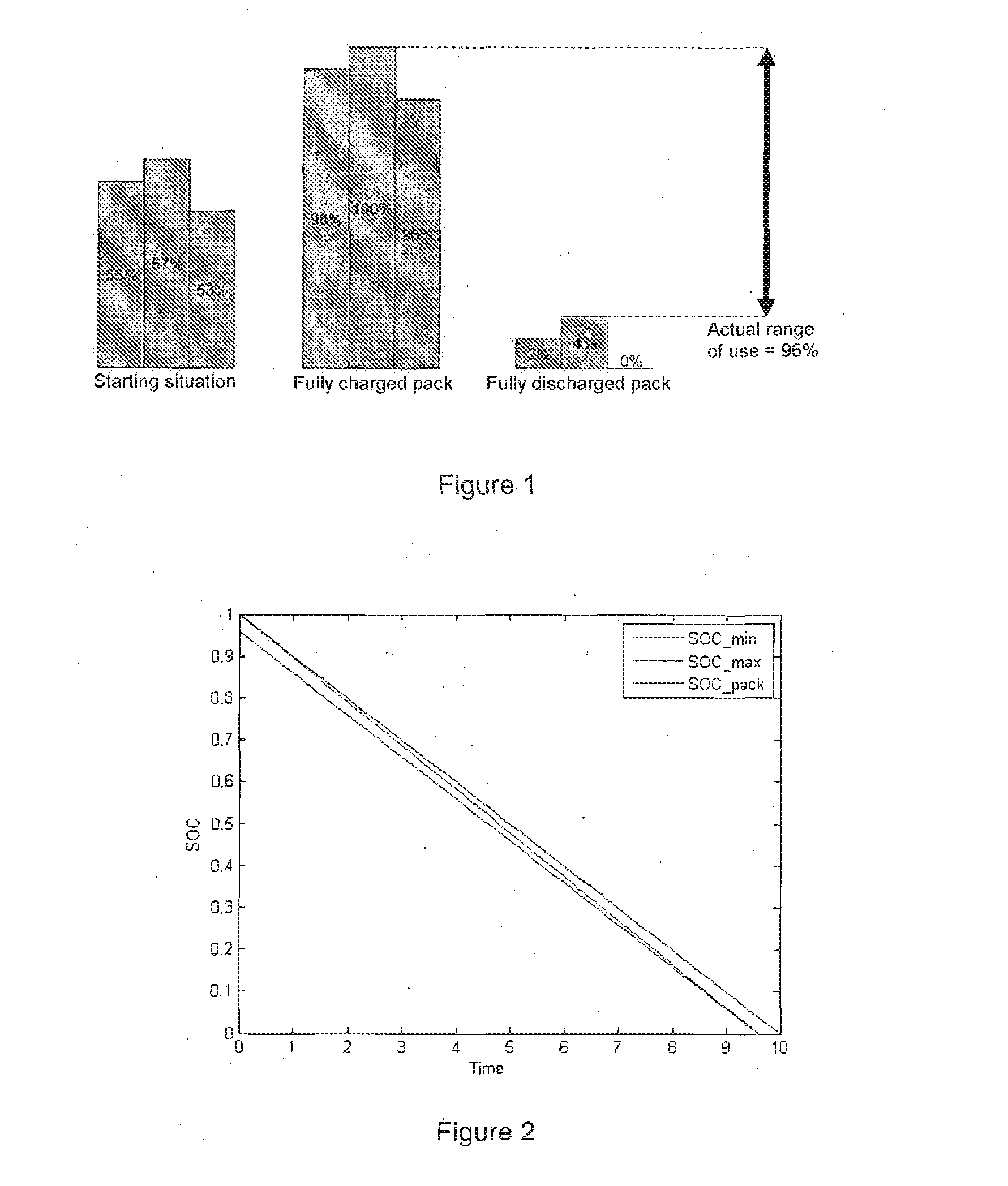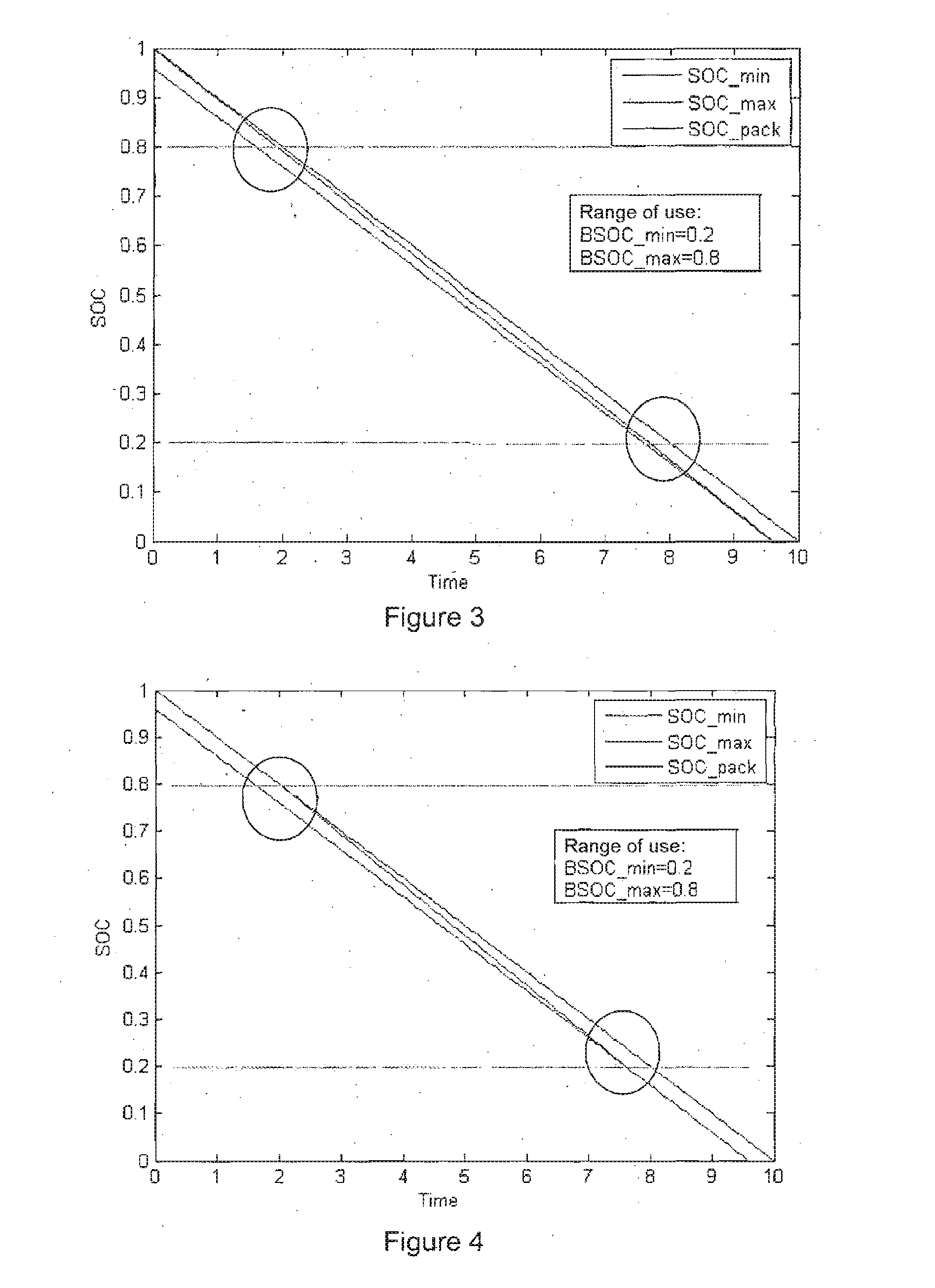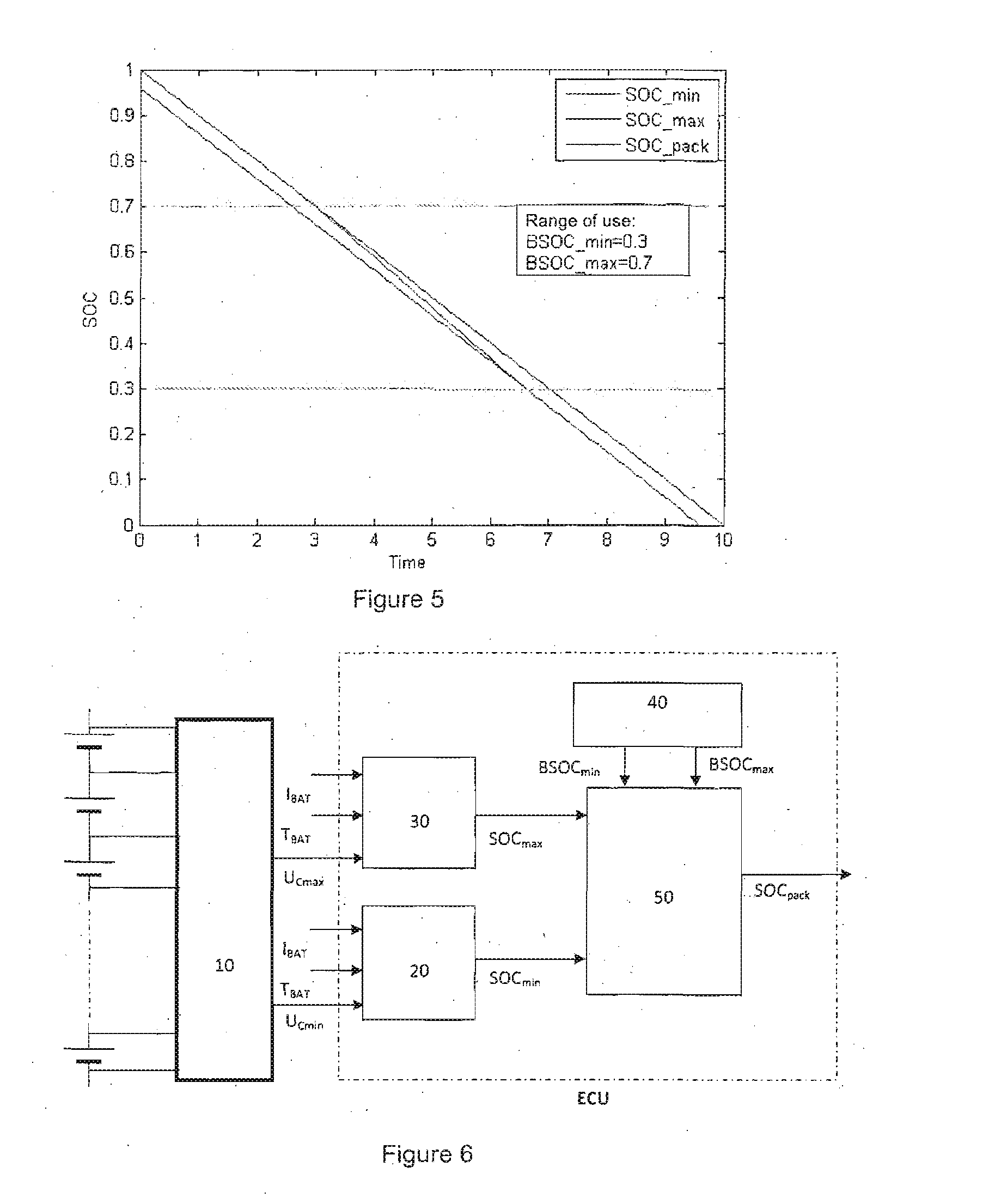Method for assessing a state of charge of a battery comprising a plurality of cells having a variable range of use of state of charge
a technology of electrochemical cells and state of charge, which is applied in the control arrangement of battery/fuel cells, electric devices, instruments, etc., can solve the problems of battery imbalance, unfavorable driving situations, and loss of power, so as to reduce the number of processors needed, accurately assess the state of charge of batteries, and reduce the effect of cos
- Summary
- Abstract
- Description
- Claims
- Application Information
AI Technical Summary
Benefits of technology
Problems solved by technology
Method used
Image
Examples
Embodiment Construction
[0037]Hereinafter, a battery comprising N electrochemical cells C1 to CN connected in series will be considered. During operation, the same current IBAT thus passes through the N cells, and the voltage UBAT at the terminals of the battery corresponds at all times to the sum of the N voltages U1 to UN taken at the terminals of the N cells.
[0038]In accordance with the invention, the assessment of the state of charge of the battery is obtained on the basis of two particular values of the N cell voltages at a given moment, one corresponding to the minimum value over all the cell voltages, referred to as the minimum cell voltage, the other corresponding to the maximum value over all the cell voltages, referred to as the maximum cell voltage, these two values being denoted, respectively, as UCmin and UCmax. Each of the cells C1 to CN has a state of charge SOC within a range of use of state of charge comprising a minimum allowable state of charge value BSOCmin and a maximum allowable state...
PUM
 Login to View More
Login to View More Abstract
Description
Claims
Application Information
 Login to View More
Login to View More - R&D
- Intellectual Property
- Life Sciences
- Materials
- Tech Scout
- Unparalleled Data Quality
- Higher Quality Content
- 60% Fewer Hallucinations
Browse by: Latest US Patents, China's latest patents, Technical Efficacy Thesaurus, Application Domain, Technology Topic, Popular Technical Reports.
© 2025 PatSnap. All rights reserved.Legal|Privacy policy|Modern Slavery Act Transparency Statement|Sitemap|About US| Contact US: help@patsnap.com



